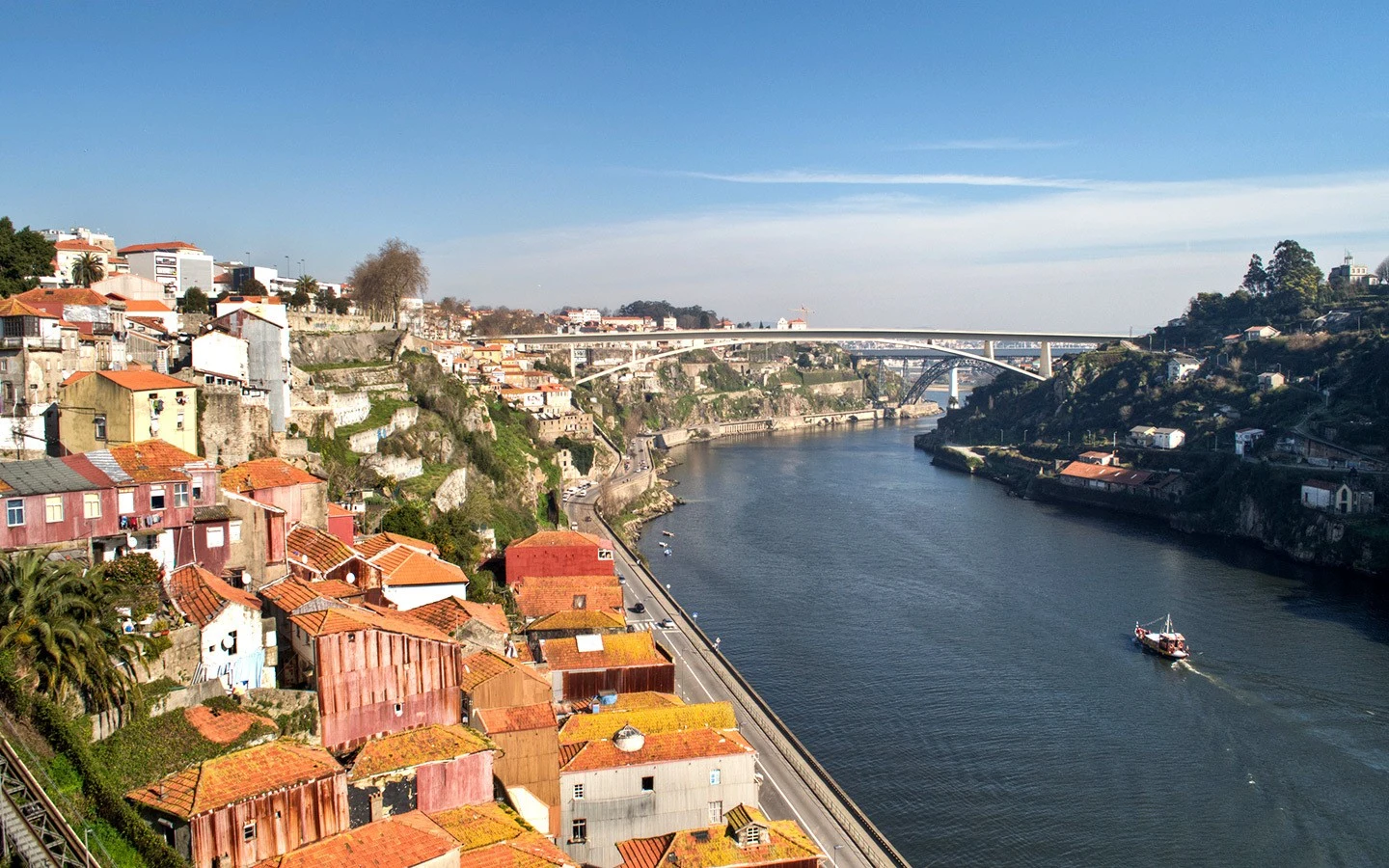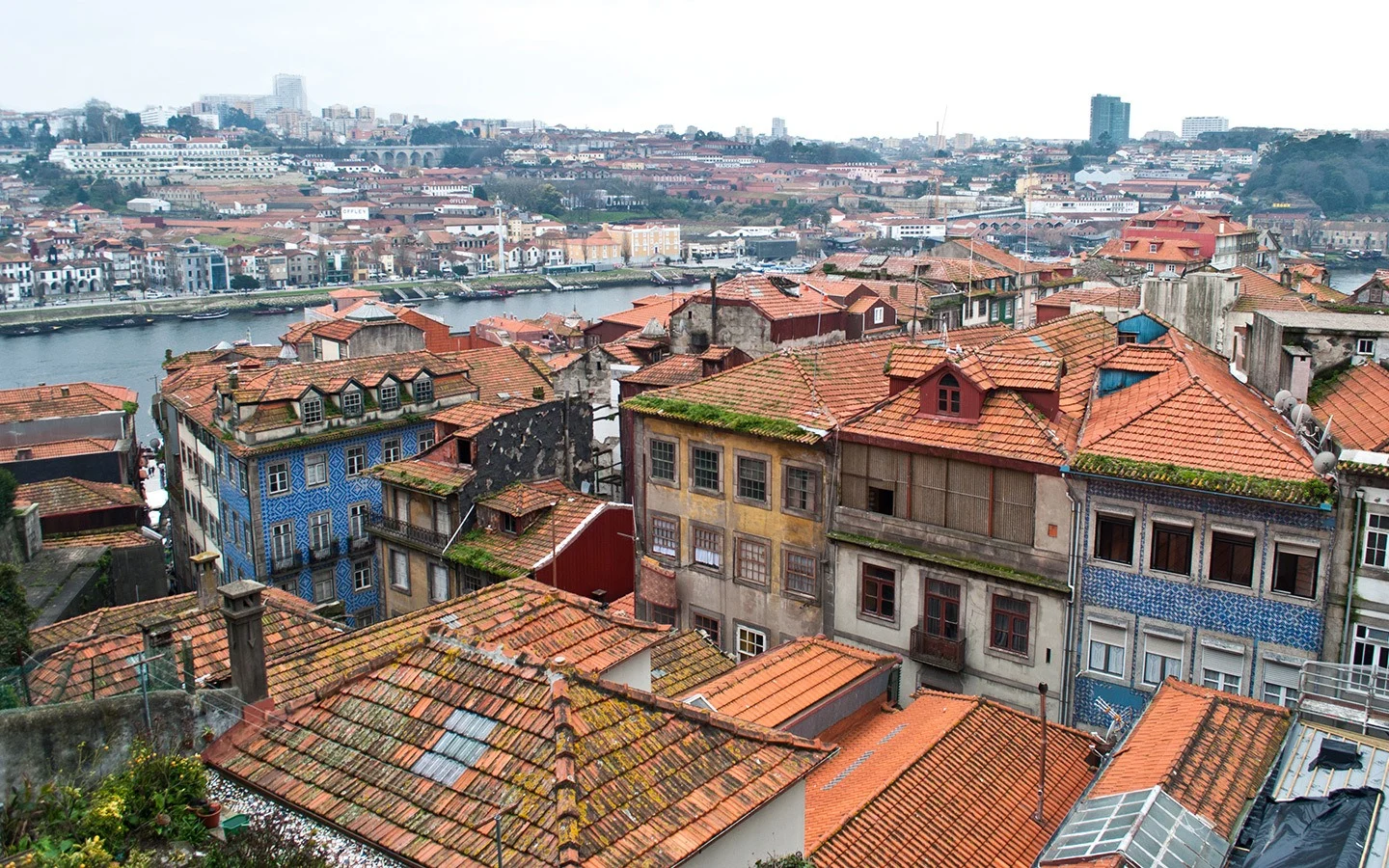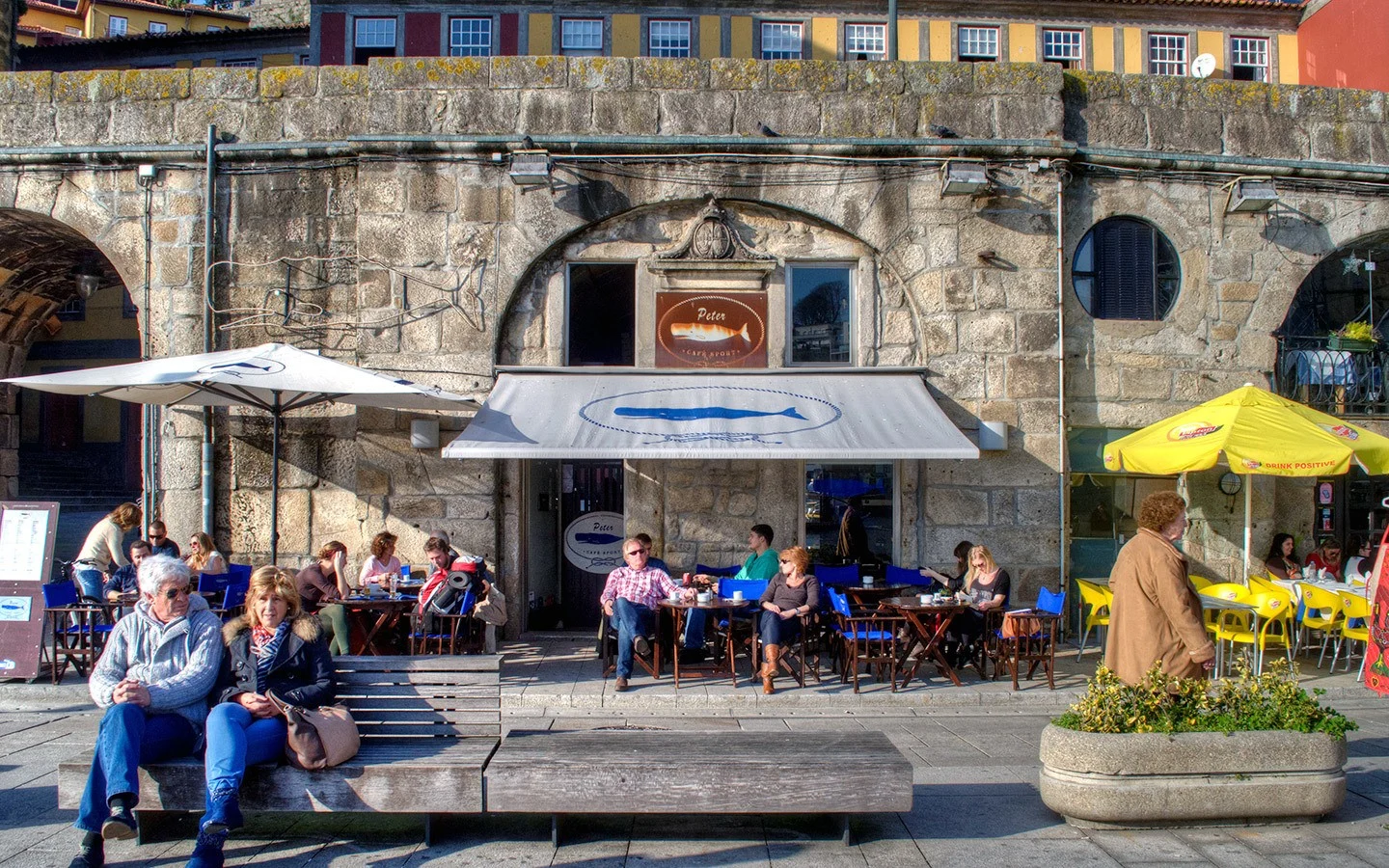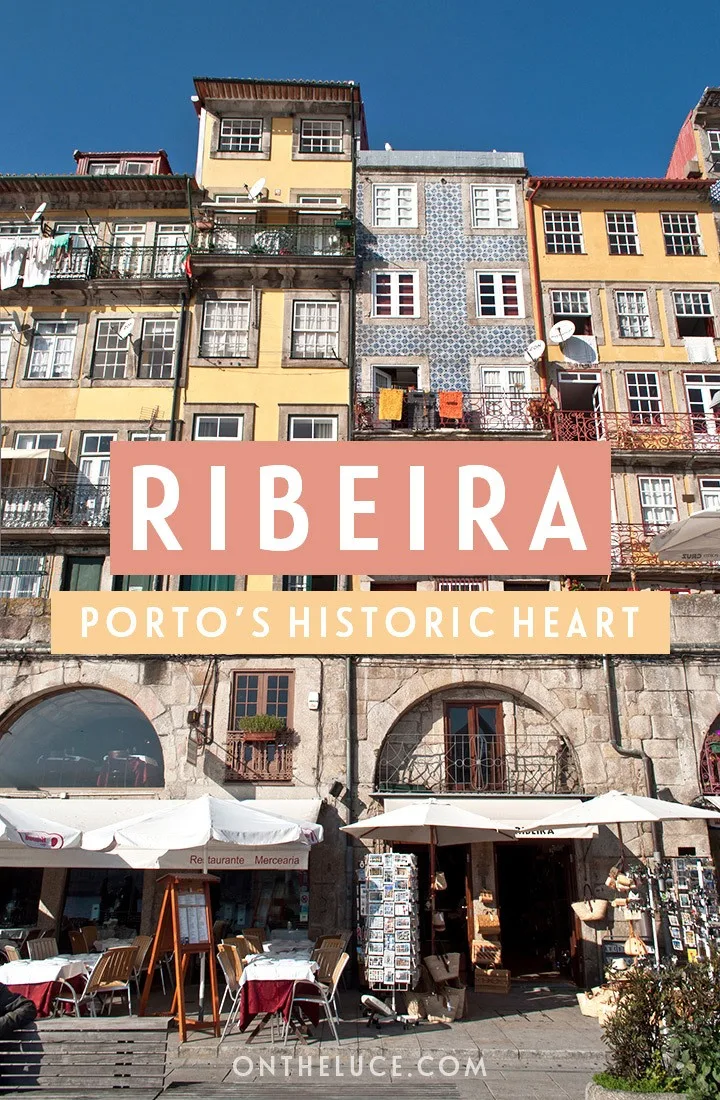
Porto is Portugal’s second-largest city, a modern metropolis home to 210,000 people, but the city’s heart still lies in its medieval old city – Porto Ribeira. This historic district begins along the banks of the River Douro and spreads into the hills behind. As one of Porto’s oldest neighbourhoods, walking its streets is like taking a step back in time. It might be the city’s most visited district, but you can still lose yourself – and everyone else – in Porto old town.
Read more: A port wine tasting in Porto
Discovering Porto old town

The Dom Luís I bridge
Straddling the River Duoro, the arching iron Dom Luís I bridge dominates Porto’s waterfront. Porto is known as the ‘city of bridges’ and this is one of six linking it to the Vila Nova de Gaia on the opposite bank, where many port lodges are based. The Dom Luís bridge is an imposing sight, whether you’re looking at it or looking out from the top of its 45-metre-high arch. It was built by Téophile Seyrig, business partner of France’s Gustav Eiffel, who’d already worked with him on the similar-looking Maria Pia Bridge in Porto – Eiffel’s last project before his Tower.

Views from the The Dom Luís bridge
The bridge stretches over 170 metres between the river banks and was the longest arch bridge in the world when it opened in 1886. Today the lower level is used by cars and the upper one is used by the metro trains and pedestrians soaking up the views across Porto and Gaia. From the top of the bridge you get a bird’s-eye view down onto the Ribeira with its maze of streets and colourful red-roofed buildings, and I couldn’t wait to get down there to explore it.

The Cais da Ribeira
Near the base of the bridge you can see the Alminhas da Ponte, a shrine to people killed in the Bridge of Boats tragedy. Before the Dom Luís bridge was built, the only way you could cross the Duoro was on a makeshift pontoon made up of 20 boats tied together – known as the Ponte das Barcas or Bridge of Boats. You can still see some of the old bridge’s pillars near the Dom Luís bridge. But when the city was attacked during the Peninsula Wars in 1809, the crush of people trying to escape sunk the boats and up to 4000 people were drowned.

Exploring the Ribeira
On an unseasonably warm, sunny February afternoon, the cafés and restaurants that line the waterfront Cais da Ribeira were packed. We took a walk along to the main riverfront square, the Praça da Ribeira, which is surrounded by tall narrow buildings covered in tiles glazed in pastel shades of red, yellow and blue. The square is filled with café tables which overflow with tourists by day and party-goers well into the night. But as you move away from the bustle of the square by just a few streets, it’s like you’ve suddenly stepped a few centuries back in time.

The Praça da Ribeira
The Ribeira has been Porto’s commercial centre ever since the Roman period, when the shipping port which gave the city its name was set up here. Over the next 2000 years it grew into a major hub for shipments from across the world. Grand warehouses sprung up along the waterside, and it’s the mix of architecture which developed over the years that’s why it’s now listed as a UNESCO World Heritage site. But today the Ribeira has a feeling of decaying grandeur, with the elegant buildings that cascade down the hillside towards the river falling into disrepair.

Backstreets of the Ribeira
From the Praça da Ribeira, we headed up steep stone stairs which are cut into the hillside. Pathways twist and turn through narrow alleyways and buildings towering above almost block out the light. It doesn’t take long to get completely disorientated, but that’s the best way to see the Ribeira. Many buildings are now deserted, left to crumble as younger residents leave Porto old town to live in the suburbs. It’s estimated that a fifth of the Ribeira’s buildings have been abandoned, but there are signs of life even in the most dilapidated-looking streets.

Hidden gardens in Porto Ribeira
Washing lines draped with drying clothes stretch across alleyways, wrought-iron balconies are filled to bursting with plant pots, and there are satellite dishes perched on tiled frontages. And then you come across hidden gems, like a tiny neighbourhood restaurant tucked away down a side street. Or a Baroque church, simple on the outside but draped in ornate gold decoration inside. Or a viewpoint where the buildings drop away and you can see out over the terracotta-tiled rooftops across the city, down to the Duoro river and on towards the sea.

Tiled rooftops
The Ribeira is also home to the ornate São Bento train station, where flashes of blue and white through the doorway drew us into a huge light-filled hall, covered with floor-to-ceiling blue and white tiles. These painted ceramic tiles or azulejos cover the fronts of churches and houses all across Portugal, but these were some of the most impressive we saw. There are over 20,000 individual tiles covering the station walls that make up pictures of battles, coronations and other events in Portuguese history. They were painted by the famous azulejo painter Jorge Colaço, who started work in 1905 and finally finished them eleven long years of painting later.

Painted tiles in São Bento station
Also look out for the Casa do Infante, the city’s oldest and only royal building where Prince Henry the Navigator was born in 1394. You also come across construction sites, where parts of Porto Ribeira are being restored and redeveloped. The district’s layout and medieval buildings are being preserved so repairing the Ribeira is a slow and expensive process. But until then its a place to wander and lose yourself – until you suddenly find yourself at the top of the hill back among the people, cars, buses and trams of twenty-first century Porto.

Porto’s trams
The details
Where to stay in Porto Ribeira
There are a few hotels in the heart of Porto old town. At the luxury end of the spectrum the five-star Pestana Vintage Porto is on the Praça da Ribeira, so you couldn’t be closer to the action. A group of colourful 16th-century warehouses have been converted into a hotel, with some rooms overlooking the Dom Luís bridge and Vila Nova de Gaia. Rooms from £175 a night.
Or My Ribeira Guest House is only a few minutes uphill from the river. It’s in another historic building, this one dating back to 1834. It has been refurbished in a bright, modern style to make eight bedrooms and one apartment, some with balconies. Rooms from £55 a night.

Restaurants in Porto Ribeira
Where to eat and drink in Porto Ribeira
Head to one of the bars next to the Dom Luís bridge for sunset – Bar da Ponte Pênsil has a perfect position right on the water. There are a row of restaurants along the riverside but some of the best are tucked away in the district’s side streets. Try Taberna Dos Mercadores for stylishly presented seafood dishes, Escondidinho do Barredo for traditional specialities like fried cuttlefish, or fill up on Portuguese tapas at cosy candlelit Jimão Tapas e Vinhos.
Pin it
This article contains affiliate links, where I get a small commission at no extra cost to you, thanks.


